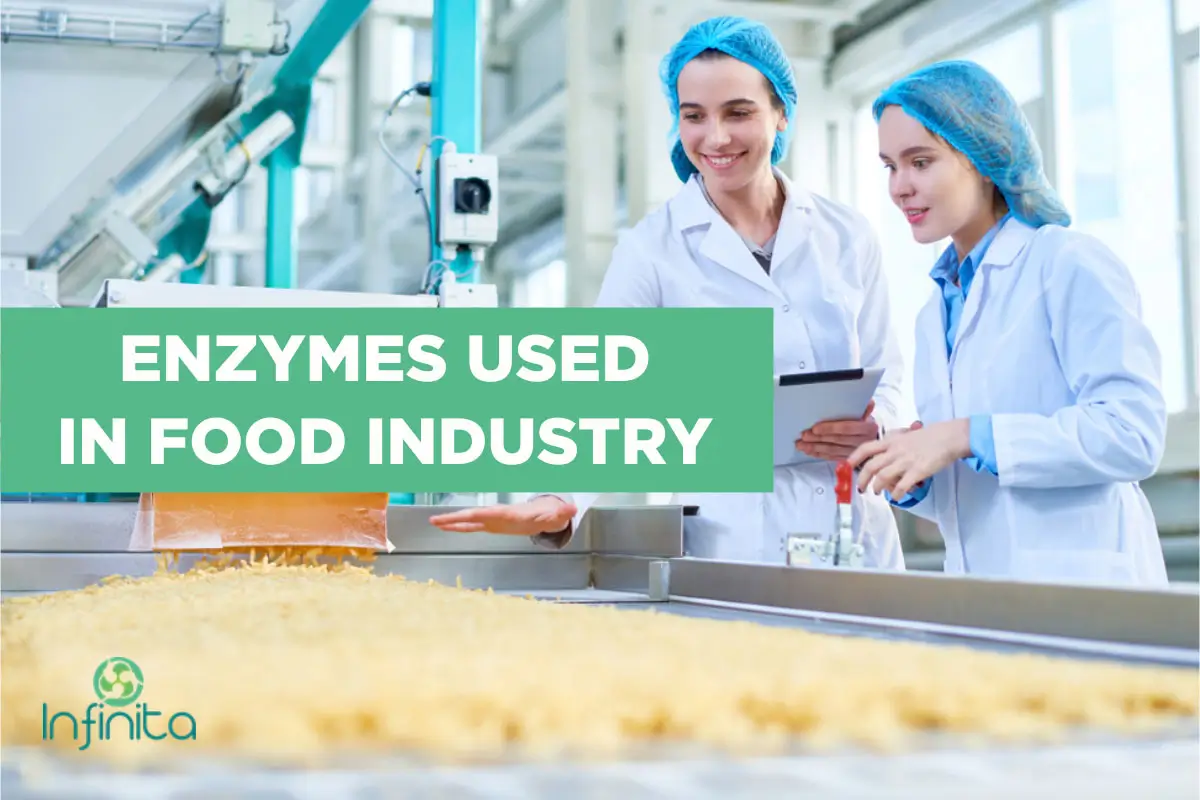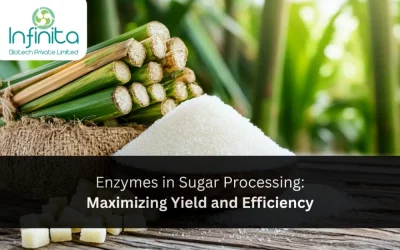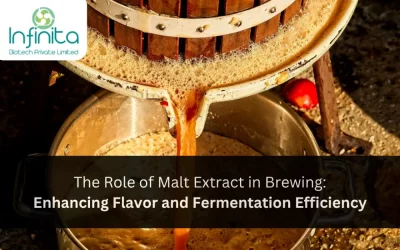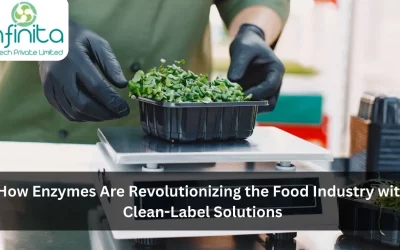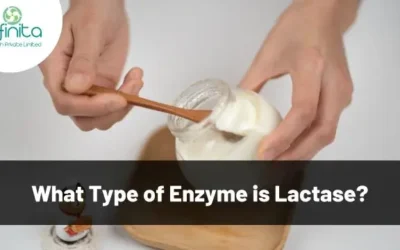Food process through the employment of biological agents is traditionally a well-established approach. The earliest applications return to 6000 B.C or earlier, with the production of brewage, bread baking, and cheese and wine creating, whereas the primary purposeful microbe oxidisation dates from 2,000 BC, with vinegar production.
Still, the large-scale application of enzymes solely became extremely established within the 1960s, when the traditional acid hydrolysis of starch was replaced by an approach based in the use of amylases and amyloglucosidases (glucoamylases), a cocktail that some years later would include glucose (xylose) isomerase. After that, the demand for design and execution of procedure and manufacturing of goods anchored in the use of enzymes has rapidly increased.
Roughly all categories of enzymes have associate degree application inside the food and feed space, but hydrolases are possibly the prevalent one. The widespread use of enzymes for food and feed process is well comprehensible, given their unsurpassed specificity, ability to operate under mild conditions of pH, temperature and pressure while showing high activity and turnover numbers, and high biodegradability. Enzymes are furthermore generally considered a natural product. The whole contributes to developing sustainable and environmentally friendly processes, since there is a low amount of by-products, hence reducing the need for complex downstream process operations, and the energy requirements are relatively low. Life-cycle assessment (LCA) has confirmed, that within the range of given practical case studies, including food and feed processing, the implementation of enzyme-based technology has a positive impact on the environment.
Along with these different strategies focused on the enzyme molecule (namely, protein engineering, enzyme immobilisation), the developments in recombinant DNA technology that occurred in the 1980s also had a huge impact on the appliance of enzymes in food and feed. By allowing gene cloning in microorganisms compatible with industrial requirements, this methodology enabled cost-feasible production of enzymes that were naturally produced in conditions that prevented large-scale application. When successfully implemented, the undertaken approaches allow: (a) constant operations at comparatively high temperatures; (b) eased execution of enzyme cascade, given the decreased need for processing the reaction media (pH adjustments; metal particle removal/addition) throughout the intermediate steps of a multistep biotransformation (namely, starch to high fruit sugar syrup); and (c) the employment of raw substrates, ideally as high-concentrated solutions, hence reducing in prices associated with upstream process and increasing productivity. Methodologies with a high level of parallelisation, anchored in computer-monitored microtiter plates equipped with optic fibres and temperature control have also been developed. These offer the high-throughput capability for a speedy and careful characterisation of the performance of enzymes. Particular focus was given to the prediction of the long-term stability of enzymes under moderate conditions using short-term runs (up to 3 hours).
Here are some enzymes used in food production especially the baking industry:
1. Papain
Papain could be a common catalyst is obtained from the inexperienced papaya (pawpaw) fruit. Enzymes square measure proteins that may increase the speed of biological changes like the ripening of fruit. At the tip of Associate in Nursing catalyst catalysed reaction the catalyst itself is unchanged and is in a position to react once more.
2. Invertase
Invertase is Associate in Nursing catalyst that catalyses the reaction (breakdown) of plant product (table sugar) into ketohexose and aldohexose. It is conjointly synthesised by bees, which use it to make honey from nectar. The optimal temperature at that the speed of reaction is at its greatest is sixty °C Associate in Nursing an optimum pH of four.5. Invertase is dear, so it may be preferable to make fructose from glucose using glucose isomerase, instead.
Chocolate-covered cherries, different cordials, and candies include Invertase, that liquefies the sugar. Once the candy is factory-made, it needs at least a few days to a few weeks in storage so the Invertase has time to break down the sucrose.
3. Isomerase
Isomerases square measure a general category of enzymes that convert a molecule from one compound to a different. Isomerases facilitate building block rearrangements during which bonds square measure broken and fashioned. By far the foremost common use of isomerases in industrial applications is in sugar producing. Glucose enzyme (also referred to as carbohydrate isomerase) catalyses the conversion of D-xylose and D-glucose to D-xylulose and D-fructose. Like most sugar isomerases, aldohexose enzyme catalyses the interconversion of aldoses and ketoses.
4. Bromelain
Bromelain is Associate in Nursing catalyst extract derived from the stems of pineapples, although it exists in all parts of the fresh plant and fruit. The extract incorporates a history of drugs use. As a cooking ingredient, it should be used as a meat compound.
The term “bromelain” might ask either of 2 proteolytic enzyme enzymes extracted from the plants of the liliopsid family, or it may refer to a combination of those enzymes along with other compounds produced in an extract.
5. Lactase
Lactase is an enzyme produced by many organisms. It is placed within the brush border of the tiny gut of humans and alternative mammals. Lactase is crucial to the whole digestion of whole milk; it breaks down disaccharide, a sugar which provides milk its sweetness. Lacking Lactaid, someone intense dairy farm product might expertise the symptoms of inherited disease. Lactase can be purchased as a food supplement and is added to milk to produce “lactose-free” milk products.
| Class | Enzyme | Role |
| Oxidoreductases | Glucose oxidase | Dough strengthening |
| Laccases | Clarification of juices, flavour enhancer (beer) | |
| Lipoxygenase | Dough strengthening, bread whitening | |
| Transferases | Cyclodextrin | Cyclodextrin production |
| Glycosyltransferase | ||
| Fructosyltransferase | Synthesis of fructose oligomers | |
| Transglutaminase | Modification of viscoelastic properties, dough processing, meat processing | |
| Hydrolases | Amylases | Starch liquefaction and saccharification |
| Increasing shelf life and improving quality by retaining moist, elastic and soft nature | ||
| Bread softness and volume, flour adjustment, ensuring uniform yeast fermentation | ||
| Juice treatment, low-calorie beer | ||
| Galactosidase | Viscosity reduction in lupins and grain legumes used in animal feed enhanced digestibility | |
| Glucanase | Viscosity reduction in barley and oats used in animal feed, enhanced digestibility | |
| Glucoamylase | Saccharification | |
| Invertase | Sucrose hydrolysis, production of invert sugar syrup | |
| Lactase | Lactose hydrolysis, whey hydrolysis | |
| Lipase | Cheese flavour, in-situ emulsification for dough conditioning, support for lipid digestion in young animals, synthesis of aromatic molecules | |
| Proteases (namely, chymosin, papain) | Protein hydrolysis, milk clotting, low-allergenic infant-food formulation, enhanced digestibility and utilization, flavour improvement in milk and cheese, meat tenderizer, prevention of chill haze formation in brewing | |
| Pectinase | Mash treatment, juice clarification | |
| Peptidase | Hydrolysis of proteins (namely, soy, gluten) for savoury flavours, cheese ripening | |
| Phospholipase | In-situ emulsification for dough conditioning | |
| Phytases | Release of phosphate from phytate, enhanced digestibility | |
| Pullulanase | Saccharification | |
| Xylanases | Viscosity reduction, enhanced digestibility, dough conditioning | |
| Lyases | Acetolactate decarboxylase | Beer maturation |
| Isomerases | Xylose (Glucose) isomerase | Glucose isomerization to fructose |
The integration of enzymes in food and feed processes is a well-established approach, but the evidence clearly shows that dedicated research efforts are consistently being made as to make this application of biological agents more effective and/or diversified. These endeavours have been anchoring in innovative approaches for the design of new/improved biocatalysts, more stable (to temperature and pH), less dependent on metal ions and less susceptible to inhibitory agents and too aggressive environmental conditions, whereas maintaining the targeted activity or evolving novel activities. This is of particular relevance for application in the food and feed sector, for it allows enhanced performance under operational conditions that minimise the risk of microbial contamination. It conjointly favours method integration, by allowing the concerted use of enzymes that naturally have diverse requirements for effective application. Such signs of progress have been made through the ever-continuing developments in molecular biology, the accumulated evolutionary enzyme engineering expertise, the (bio)computational tools, and the implementation of high-throughput methodologies, with a high level of parallelisation, sanctionative the economical and timely screening/characterisation of the biocatalysts.
